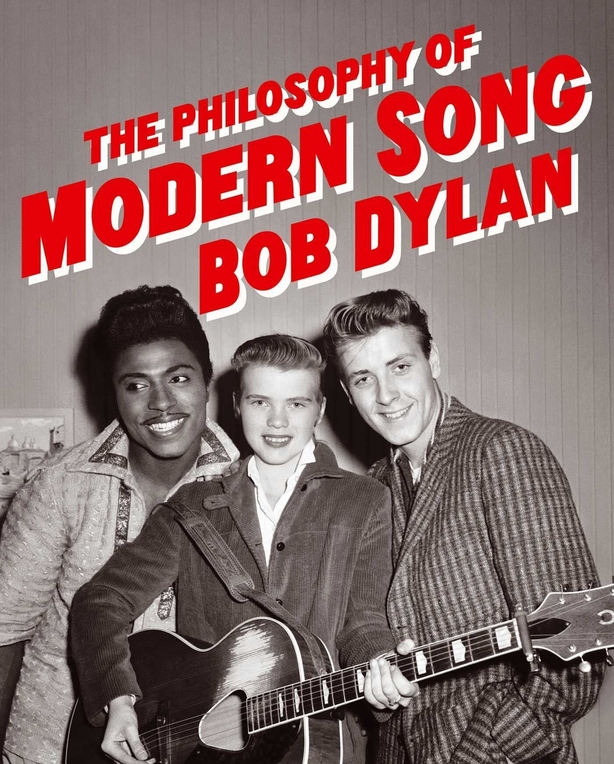Bob Dylan likes to keep us guessing, and he keeps us guessing again with this beautiful, though-provoking, idiosyncratic new book. The Philosophy of Modern Song offers many things, but not Dylan's philosophy of modern song - at least not directly. The rather immodest title is probably one of his little jokes.
For starters, the word "modern" certainly doesn’t fit. All but a handful of the 66 songs featured are from the last century (and one is from the previous century). The best represented decade is the 1950s, the most modern song included is from 2003, nearly two decades ago.
As to Dylan offering his own philosophy of songs, or song writing, or even singing – well, you have to search for it.
We need your consent to load this rte-player contentWe use rte-player to manage extra content that can set cookies on your device and collect data about your activity. Please review their details and accept them to load the content.Manage Preferences
Listen: Glen Hansard reviews Bob Dylan's Philosophy of Modern Song for Arena
Early on, Dylan dismisses the importance of the listener being aware of the background to what they are hearing. "Knowing a singer’s life story doesn’t particularly help your understanding of a song...It’s what a song makes you feel about your own life that’s important."
And that insight is a large part of what this book is about. Most of the songs featured are accompanied by prose compositions that convey the feelings which they evoked for Dylan. These pieces are enigmatic but often very funny, and moving, and insightful.
But this is Bob Dylan, so don’t expect him to obey his own rule. Most of the 66 are also accompanied by his account of the artist and of the song – giving the reader some of the "singer’s life story" and the genesis of the piece in question.
Does this help us understand the song better? Maybe, maybe not, but for Dylan, that isn’t important: "Like any other piece of art, songs are not seeking to be understood. Art can be appreciated or interpreted but there is seldom anything to understand. Whether it’s Dogs Playing Poker or Mona Lisa’s smile, you gain nothing from understanding it." There will be wailing and gnashing of teeth in all the university departments running courses on Dylan when they read that line.
I’ve always found knowing the back story to a particular song or album helpful. But Dylan might have a point when he argues that knowing the backstory too well can diminish the universal appeal of a song, that tying a song too directly to the creator’s own experience reduces its ability to say something about the listener’s life.
He gives the example of Save the Last Dance for Me, written by Doc Pomus. A familiar song, which for many people will evoke memories of their own love lives.
But then Dylan tells us the story behind it. After a childhood bout of polio, Pomus used a wheelchair; he came up with the song on his wedding day, as he watched his new bride dance with other guests. Dylan observers: "It’s hard to have your own romance supersede Doc’s once you know the poignant backstory." Indeed.
Quite apart from the writing, this is a beautiful book, packed with wonderful photographs and images – none of them captioned, of course; you’re expected to do some work, after all.
It is also very funny. If you’re a lawyer specialising in divorces, you might want to skip the (very entertaining) three-page rant Dylan directs at your profession. I doubt that female Rolling Stones fans will be too impressed with his description of how they dress. And Heavy Metal fans will be aggrieved at having their favourite music compared to Bluegrass (he makes a strong case: both are steeped in tradition, both haven’t changed visually or audibly in decades, both have a traditional instrumental line-up). To make matters worse, Dylan claims that Bluegrass is more inventive, "speed metal without the embarrassment of Spandex and junior high school devil worship."
I imagine that most people buying this book will do so in the hope of gaining insights into the author’s music. Of course, there’s nothing too direct, but there are hints.
He has interesting insights into song writing (arguing that, like other forms of writing, it is largely about editing, about "distilling thought down to essentials... In many cases the artistry is in what is left unsaid"). He talks about how a song changes through performance – the recorded version is just "a snapshot of those musicians at that moment", and the song can develop through being played live (something Dylan’s fans can certainly attest to). He also reveals "the real reason you can’t wait to get on the road again" (I won’t spoil it for you, but it is quite funny, and certainly explains the Never Ending Tour).
And then there’s his discussion of Bobby Darin, who was blessed with a wide variety of vocal styles: "But here’s the thing about chameleons, if you don’t watch them changing colours they just look like an ordinary lizard. Their uniqueness lies in their transformative nature." Now who does that remind you of?
But perhaps the key to Dylan’s Philosophy of Modern Song lies in his claim that the "rules governing both the literature of lyrics and the mathematics of melody are mere guidelines and those who slavishly follow them, who can only colour inside the lines, run the danger of never transcending craft to create anything truly lasting… People can keep trying to turn music into a science, but in science one and one will always be two. Music, like all art, including the art of romance, tells us time and again that one plus one, in the best circumstances, equals three." Now there’s a philosophy worth living by.

The Philosophy Of Modern Song is published by Simon & Schuster


